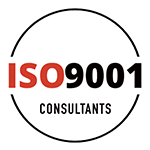Getting ISO 9001 certification can feel like a big task, but breaking it down makes it more manageable. This certification is about ensuring quality management systems are up to standard, benefiting businesses with improved operations and customer satisfaction. The great news is that achieving this doesn’t have to take forever. With the right approach, you can streamline the process.
The first step is understanding the ISO 9001 standard itself. Knowing what is required can guide your planning and execution. From there, it’s about preparing your team and gathering necessary resources. Engaged employees and well-organised tools and records are crucial for success. Finally, conducting internal audits and reviews can help identify areas needing attention before the official audit. By following these steps, your company can achieve certification efficiently and effectively.
Understanding ISO 9001 Requirements
ISO 9001 focuses on quality management and ensuring businesses meet customer satisfaction standards. It provides a framework that organisations can use to streamline processes and improve efficiency. The standard is divided into several key components, each addressing different aspects of quality management.
1. Leadership: This component emphasises the importance of management’s commitment to the quality management system (QMS). Leaders must set clear policies and objectives and engage all staff in meeting them.
2. Planning: Organisations need to plan QMS activities effectively, including setting objectives and addressing potential risks and opportunities.
3. Support: This involves managing resources, ensuring staff competence, and maintaining infrastructure and work environments to support QMS.
4. Operation: This section covers the day-to-day activities, including product/service planning and control, to meet customer needs.
5. Performance Evaluation: Businesses must regularly assess their QMS to ensure it’s effective. This includes monitoring, measurement, analysis, and evaluation.
6. Improvement: Continuous improvement is a core principle, encouraging organisations to identify non-conformities and take corrective actions.
These requirements apply to various business processes by ensuring that every aspect, from management’s role to resource allocation, aligns with the QMS objectives. By understanding ISO 9001’s structure, organisations can better align their processes to meet these standards and benefit from structured operations and improved customer relationships.
Preparing Your Team and Resources
Once the requirements are clear, it’s time to get your team and resources ready. Engaging and training employees is a crucial step in achieving ISO 9001 certification. Here’s how to prepare effectively:
– Training Sessions: Conduct workshops to educate employees about ISO 9001 standards and what their roles entail. Ensure everyone understands the importance of quality management and how their work contributes to it.
– Assign Roles and Responsibilities: Clearly define roles related to the QMS. Designate a team or a quality manager to oversee the implementation process to ensure consistency and accountability.
– Resource Allocation: Identify and allocate the necessary resources. This could include budget considerations, tools, and equipment required to meet the ISO 9001 standards.
– Communication Channels: Maintain open lines of communication across departments. Regular updates and feedback sessions can help in resolving issues promptly and foster a team-oriented environment.
– Motivation and Engagement: Use incentives or recognition programs to motivate employees as they adapt to the new system. Recognising achievements helps maintain enthusiasm and commitment.
Preparing the team and resources not only streamlines the certification process but also guarantees that the quality management system will be embraced by everyone involved. Engaged employees provide a foundation for sustained improvements and help ensure the smooth operation of the QMS.
Streamlining Documentation and Records
Efficient documentation is crucial for ISO 9001 certification. Properly managed records not only fulfil compliance requirements but also facilitate smooth business operations. Here are tips for organising and managing existing documents effectively:
– Create a Document Control System: Establish a centralised system to track all necessary documents. This includes establishing version controls and ensuring only authorised personnel can make changes.
– Simplify Processes: Keep documentation clear and concise. Use templates for procedures and forms to maintain consistency across all departments.
– Use Digital Tools: Leverage digital tools and software to store and manage records. This reduces physical storage issues and provides easy access to documents. Backup important files regularly to prevent data loss.
– Regular Audits: Conduct routine checks to ensure all records are up to date. Remove any outdated or unnecessary documents to minimise clutter.
Ensuring your records meet ISO 9001 standards involves verifying that documents accurately reflect current practices and comply with all requirements. This can be achieved by assigning a team member to oversee the maintenance and accuracy of documentation. Clear records not only aid in certification but also help improve overall organisational efficiency and transparency.
Conducting an Internal Audit and Review
An internal audit is a critical step before facing the official ISO audit. It allows organisations to assess their readiness and address any potential shortcomings. Here’s how to conduct an effective internal audit:
– Develop an Audit Plan: Outline objectives, scope, and methods to be used during the internal audit. Ensure all relevant areas of the business are included.
– Choose an Audit Team: Select skilled individuals who understand the QMS and are trained in auditing. It’s often beneficial to include a mix of team members from different departments for a comprehensive evaluation.
– Implement the Audit: Conduct the audit systematically, evaluating compliance with ISO 9001 requirements. Take notes of observations, and document any non-conformities found.
– Review and Correct: Hold management reviews to discuss audit findings. Identify gaps and develop action plans to address them, prioritising critical issues.
These steps help identify weaknesses and prepare the organisation for the external audit. By resolving internal issues early, businesses gain confidence and demonstrate a commitment to quality management systems.
Conclusion
Achieving ISO 9001 certification can significantly enhance a company’s operations and market reputation. Understanding the standard, preparing thoroughly, and conducting systematic audits are essential steps in this journey. Proper documentation, effective team engagement, and resource management pave the way to certification success.
ISO 9001 promotes excellence and efficiency, urging businesses to maintain high standards and continuously improve. By embracing these principles, organisations not just meet regulatory requirements, but also enhance productivity and customer satisfaction. This ongoing commitment leads to better service delivery and boosts business growth.
Achieving certification swiftly requires focus and dedication, but the rewards are worth it. Let ISO 9001 Consultants help you unlock new opportunities and streamline your path to certification. Our expertise ensures you meet all standards while improving your business processes. Reach out today and take the first step towards ISO 9001 success.








Users Comments
Get a
Quote